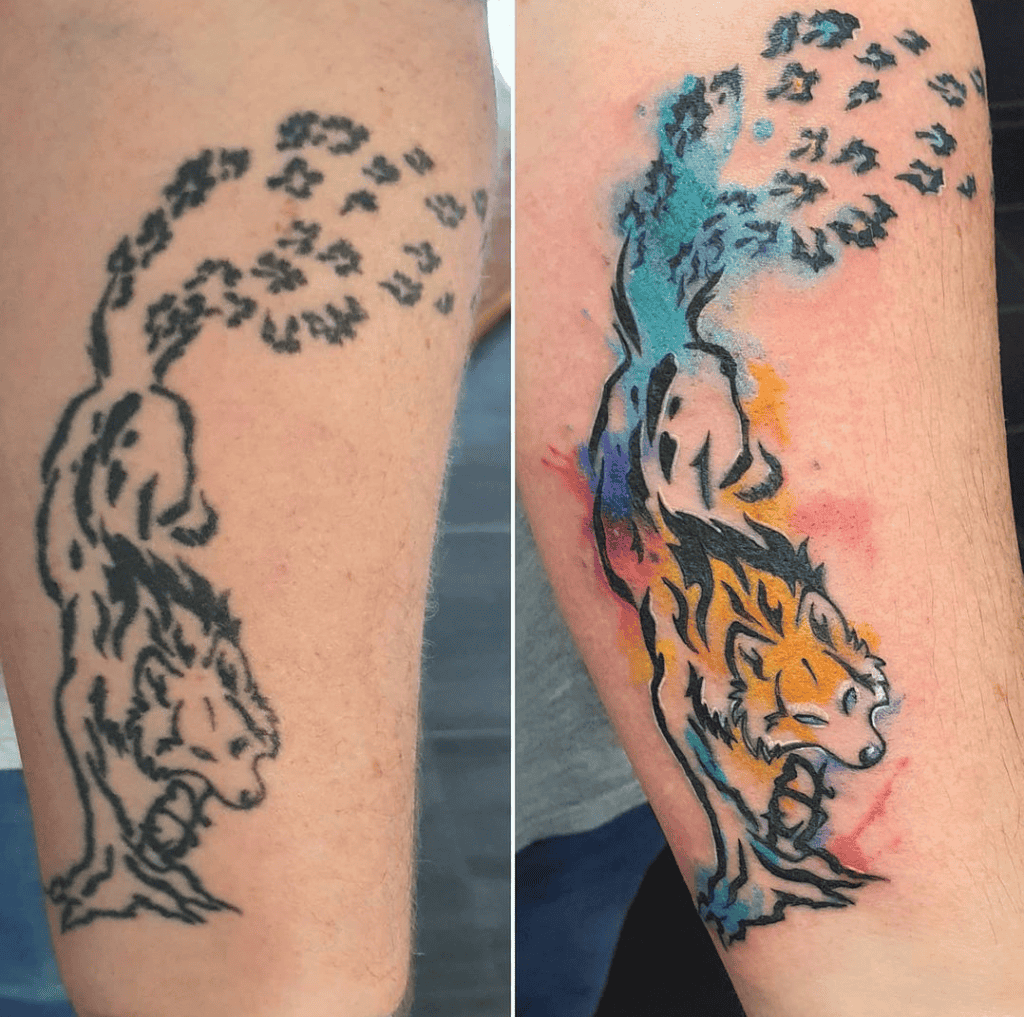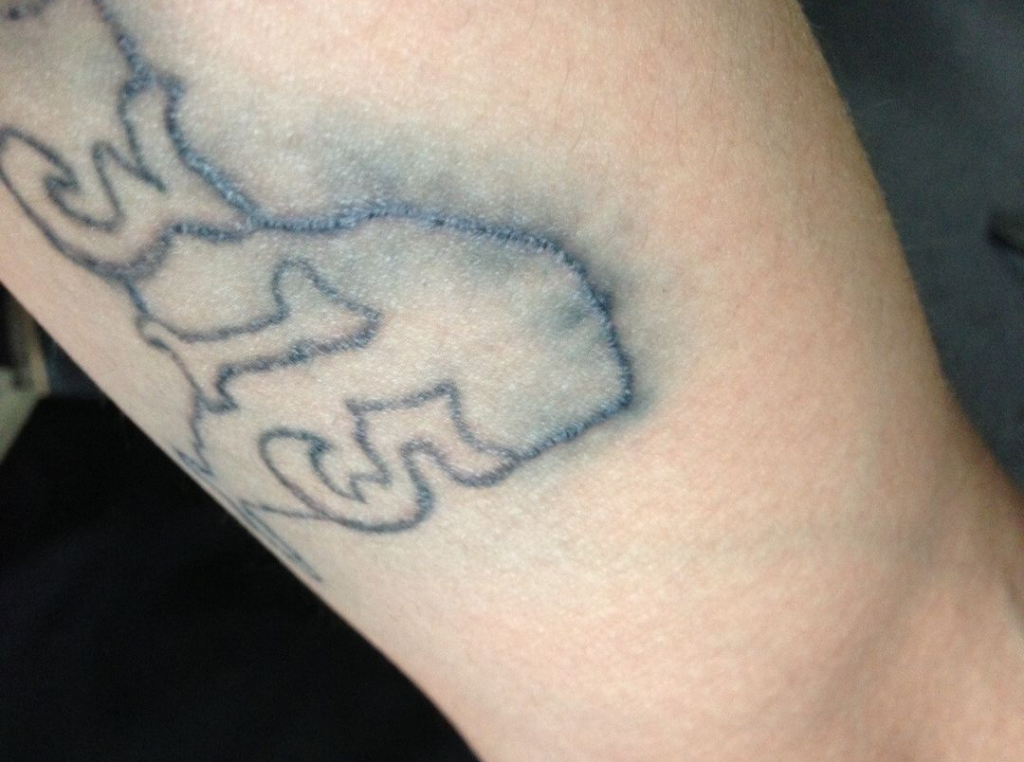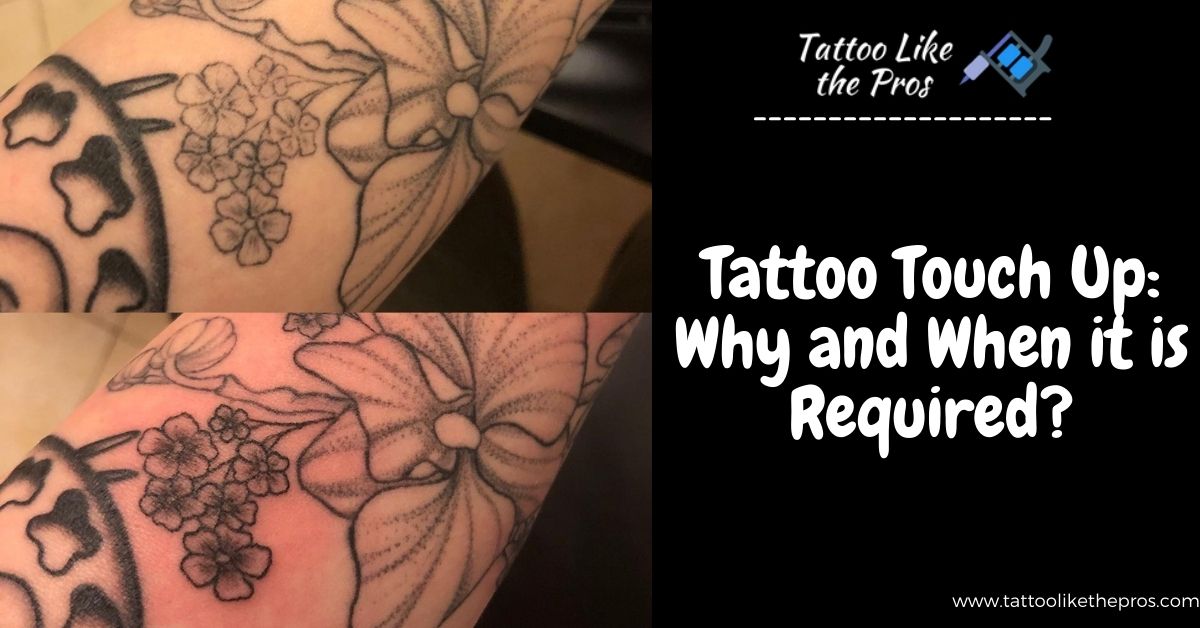Tattoos are a form of permanent body art. Like the rest of our bodies, tattoos are prone to changes and deterioration. To keep your tattoos in good shape, you need to ensure they’re cared for in a similar way you care for your entire body. Yet, the occurrence of certain scenarios means you may have to get a tattoo touch-up done. These scenarios include: Your tattoo doesn’t look as expected after it has healed; the existing tattoo has faded over the years; you notice the shading looks uneven; there are patchy and washed-out colors, or you wish to give your tattoo a bit of a facelift.
If you don’t know: Why and when your tattoo should be touched up, how to do a tattoo touch-up, and everything else about the tattoo touch-up process, you’ve landed on the right page. In this guide, we’ve outlined all aspects so that you can keep your tattoos touched up to be vibrant throughout their lifetime.
What’s A Tattoo Touch Up?
A tattoo touch-up is different from a tattoo cover-up in that it involves tattooing over the tattoo itself to fix all the minor imperfections, whilst retaining the original design. A tattoo coverup on the other hand entails drawing a new tattoo over an older one to hide and change the overall design.
Occasional tattoo touch-ups are important during the lifetime of the tattoo because you wouldn’t want the arisen imperfections to be as permanent as your tattoo. A touch-up is necessary for fixing a new tattoo that hasn’t healed properly due to a blowout or any other imperfections. A touch-up may also become necessary as the tattoo ages and fades, requiring much-needed revitalization.
When Exactly To Get Your Tattoo Touched Up?

A tattoo touch-up is required when the details of a tattoo aren’t complete, precise, sharp, and vibrant enough for the tattoo to look its potential best. As mentioned earlier, an important stage to check for such deficiencies is when the tattoo has completely healed. You should also check periodically through the tattoo’s lifetime. A healed tattoo is safe to touch up in case there are any noticeable shortcomings in its vibrancy of colors, evenness of the shading, the precision of the fine line or dot work, or any other faded or missing details.
A tattoo touch-up typically requires a quick session at the tattoo shop. The artist fixes the imperfections of the existing tattoo by adding small details or bits of color as may be needed.
Let’s take a more in-depth look at when exactly a touch up is required:
#1. When You’ve Experienced A Tattoo Blowout:

A properly inked tattoo settles into the skin layer called the dermis. This desired outcome is almost always certain when you trust the hands of an experienced professional artist. But, if an amateur or inexperienced tattooist is recruited for the task, the chance of a mishap like a tattoo blowout is more likely than not.
In a tattoo blowout situation (see example below), the ink ends up deeper than the desired layer of the skin, where it isn’t stable. As a result, the ink spreads beyond the intended design boundaries, needing an eventual touching up. At his point, you should get your touch-up done by a professional instead of the same amateur that messed up your tattoo.
#2. When The Tattoo Has Gotten Old And Shows Signs Of Fading:
There are certain obvious signs your tattoo is fading and needs a touch-up. These include blurring of the lines, loss of original color, loss of initial brightness, and the lack of vividness of a new tattoo. To touch up a fading or faded tattoo, the whole tattoo doesn’t need to be redone. The artist, using a matching ink pigment, would touch up the faded bits only. And, if this is done properly, the design would come back to life.
As an additional tip, there are steps you could take to minimize the chances of the tattoo from fading significantly. For instance, you can minimize exposure of the tattooed area to the sun’s dangerous UV rays by applying proper sunscreen while going out. You can also endeavor to keep the tattoo covered while going out in the bright sun. It is also essential to keep the tattoo moisturized and hydrated using only the right lotion for it to maintain its original look. One should remember not to rely on petroleum-based products like Vaseline instead, especially during the healing process.
#3. When The Tattoo Is At A Vulnerable Body Placement:
Your tattoo might be placed on one of the best places for a tattoo according to popular trends or otherwise. Yet, if it’s at an overly exposed area or one prone to excessive sweating and skin stretching (especially as you age), you’re bound to need more frequent touch-ups.
So, which are these specific placements? These are places like your foot, hand, ankle, and inner thigh among other body locations where there is excessive friction, stretching, and sweating. In these placements, the tattoo loses its original pigment, shape, lines, shading evenness, and vividness a lot faster.
Although touch-ups bring back life and vividness to the tattoo, these specific placements will continue to require care to minimize the reoccurrence of the adverse impact. Steps like wearing loose clothing, keeping the area clean, and applying sunscreen when stepping outside, would prove highly beneficial.
#4. When There’s An Infection:
Tattoo infections are preventable but not always avoidable. They often occur when bacteria unexpectedly enter the tattoo wound during the critical healing stage. There are several ways this could happen, from contaminated tattoo equipment to not keeping the tattoo area clean. Peeling the tattoo during the healing stage is another big reason tattoos may get infected. The key to avoiding such a disaster is to avoid itching and peeling to not allow pathogens to enter the tattoo wound.
An infected tattoo doesn’t turn up as desired even after it’s treated and healed. Once you’ve gotten your infection treated and the tattoo has healed, you should then get your dermatologist’s approval for the go-ahead for a potential tattoo touch-up you require.
FAQs
Tattoo touch-ups are usually minor, requiring brief sessions. So when they are chargeable they won’t be very expensive. Their price depends on the size, type, and placement of the original tattoo and the amount of touch-up required.
There are situations in which the touch-ups can be free. This is when the tattooist has committed to adhere to any touch-up requirements requested by the client within a period of guarantee by the artist. This period is a set number of months like 6 months, for instance. However, this offer can be void if proper aftercare suggested by the artist isn’t strictly followed by the client.
If within that guaranteed period you decide to get the touch-up from a different artist, then of course you’ll have to pay for the touch-up.
You should know that Proper tattoo aftercare is important from the day the client leaves the tattoo studio after getting inked. This means the client should follow the proper cleaning and other aftercare instructions through to the end of the healing process and beyond.
Tipping your original tattoo artist is not mandatory for touch-ups done within the guarantee period. Yet, in most service industries, it is always a nice gesture to tip at least 15% of the value of work as a token of respect.
The level of pain is subjective. It varies depending on factors like the individual’s pain threshold, the placement of the tattoo, the size/type of tattoo and touch-ups required, and the experience of the artist.
A tattoo that didn’t heal well, to begin with, should be touched up after a month to within a year after it was originally inked. On the flip side, a properly healed tattoo that received proper aftercare would be good to go for a few years before requiring a touch-up.
It’s recommended you visit a professional tattoo artist who has a knack for spotting deficiencies, for a consultation a few years after getting the original tattoo. If your tattoo has been aging for a decade or more, it is a no-brainer that you should consult for a probable touch-up.
Touching up a new tattoo the very next day after it was tattooed is a terrible idea. A new tattoo is an open wound till it heals. If your artist knows their work well, they wouldn’t let you do it, period! Thus, you need to wait for the tattoo to heal completely before you can get a touch-up.
For a majority of tattoos, the typical healing time is anywhere between 2 to 4 weeks. The exact time depends on the type of tattoo, your hydration and health, and the tattoo aftercare administered. Once that period ends, you should consult your original tattoo artist to get his or her opinion on the healing outcome as well as any touch-up requirements they notice.
The ideal timing for a touch-up of a brand-new tattoo is 1 to 6 months post getting inked. It won’t make a difference if you get it touched up a year later, but the first 6 months are usually recommended by most tattooists.
The healing time for a touch-up is the same as for a brand-new tattoo, which is between 2 to 4 weeks. Also, the same aftercare should be administered for a touch-up as was for the original tattoo.
A touch-up can take anywhere between 5 minutes to a few hours. It all depends on the type of tattoo (colored or black and grey ink), the size and intricacy of the design, and the body placement. Moreover, ensuring proper aftercare, especially hydration and moisturization, will extend the life and vibrancy of your tattoo manifold.
Conclusion
Your new tattoo may be inked perfectly by a reputable artist, with no noticeable flaws after the artwork has healed completely. Nevertheless, there will come occasions, up to a couple of times during the lifetime of the tattoo, to get it touched up.
When getting a new tattoo, the reputation and experience of your tattoo artist are important, but not all that matter. What also matters is that the client should be skilled at recognizing if their new or old tattoo needs touching up. The object of this article was to serve that purpose by being a guide to teach you everything there is to know about tattoo touch-ups.
